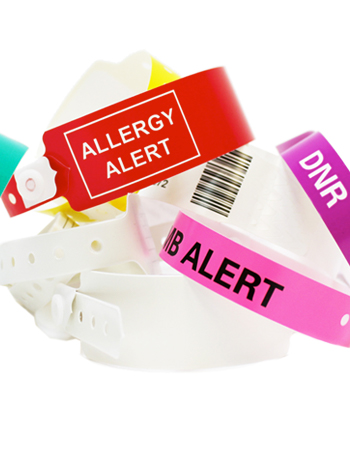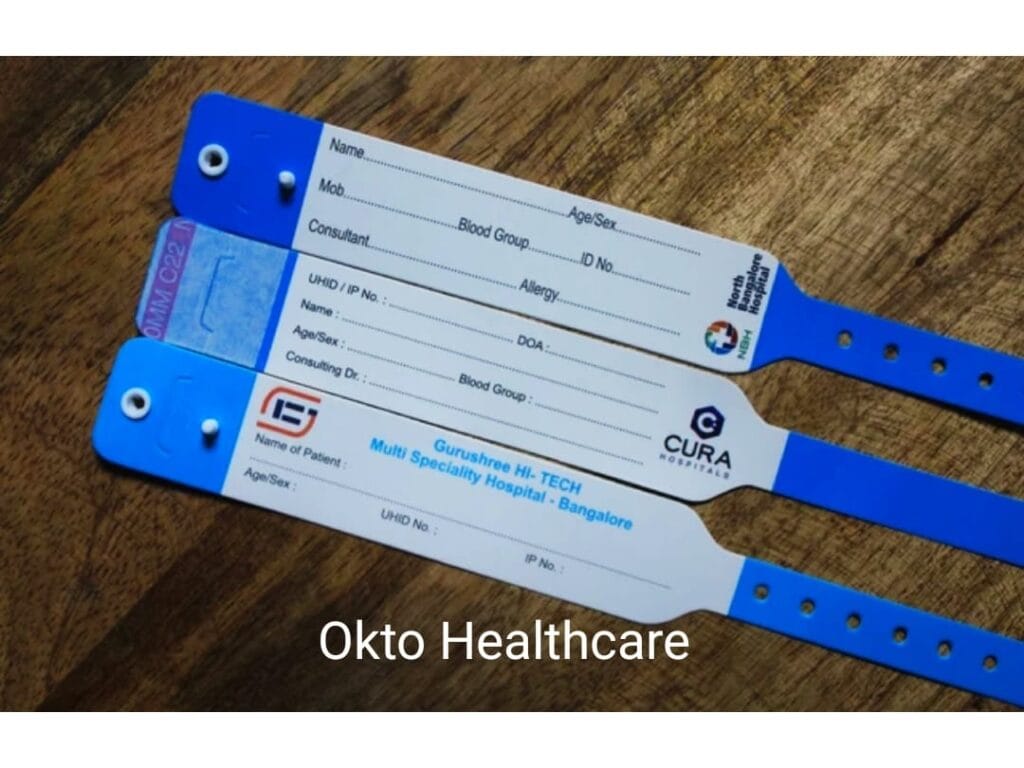Patient Identification Band: An Essential for Streamlined Medical Facility Workflow
Patient Identification Band: An Essential for Streamlined Medical Facility Workflow
Blog Article
Simplifying Client Treatment With Reliable Identification Bands
The application of effective recognition bands is a pivotal aspect in improving client care within health care settings. As the landscape of individual recognition advances, one should take into consideration the ramifications of these systems on total healthcare delivery and person results.
Importance of Individual Identification
Making certain accurate individual recognition is critical in medical care settings, as it directly affects the safety and top quality of treatment given. Misidentification can cause severe mistakes, including providing the wrong drug, carrying out wrong procedures, or miscommunicating essential person details. Such mistakes not only endanger person safety and security but can also result in legal ramifications and lowered count on health care systems.
Efficient patient recognition is basic to establishing a safe environment where people obtain customized and ideal treatment. It facilitates the exact paperwork of clinical histories, allergies, and treatment strategies, guaranteeing that doctor have access to necessary info whatsoever times. Furthermore, robust identification methods assist enhance communication among medical personnel, boosting collaboration and lowering the danger of errors.

Sorts Of Recognition Bands
Identification bands play a critical function in maintaining accurate individual records and improving safety within medical care settings. Numerous kinds of recognition bands are utilized to satisfy the particular requirements and requirements of various individual populations.

Another type is the ankle joint band, which is particularly valuable for infants and newborns, making certain that identification continues to be intact also during treatment procedures. Specialized bands, such as those for allergic reaction alerts or drop threat signs, supply added layers of security by drawing immediate interest to essential client conditions.
Recently, electronic recognition bands have actually obtained popularity, including barcodes or RFID technology that can be checked to promptly obtain patient data. These bands improve process and reduce the danger of human mistake throughout patient identification procedures.
Benefits of Effective Recognition
Effective identification of individuals with making use of identification bands contributes considerably to total client safety and security and care top quality. By making sure that each patient is properly identified, doctor can effectively match medical therapies and treatments to the proper individual, reducing the threat of mistakes. This is particularly important in environments with high client turn over, where the possibility for misidentification is higher.
Furthermore, effective recognition bands boost interaction amongst healthcare groups. Exact and clear person recognition promotes collaboration and makes sure that all staff member are mindful of a person's details needs and medical history. This interaction is necessary for providing worked with care, especially in emergency situation situations where time is vital.

Inevitably, efficient recognition through making use of recognition bands not only safeguards people but likewise promotes a society of safety and security within health care centers (Patient Identification Band). By focusing on exact identification, health care organizations can enhance outcomes and improve the total individual experience
Implementing Identification Solutions
While the relevance of patient identification is well identified, the application of durable identification systems positions a complex challenge for healthcare organizations. Establishing efficient recognition systems requires a thorough approach, incorporating innovation, employees training, and procedure assimilation.
First, organizations should select proper identification innovations, such as barcode scanning, RFID, or biometric systems. Patient Identification Band. These innovations must be evaluated based on price, functionality, and compatibility with existing framework. A pilot program can help identify possible problems before full-scale implementation
Next, extensive training for personnel is essential. All workers need to comprehend the importance of accurate patient recognition and excel in the use of the chosen innovations. Routine training updates and assessments can reinforce finest practices and ensure ongoing compliance.
Furthermore, medical care organizations ought to develop standard procedures for client recognition across all divisions, boosting and minimizing discrepancies communication. Normal audits can aid determine spaces in adherence to these methods.

Eventually, a reliable application of identification systems not just improves client security but additionally cultivates a society of accountability and persistance within health care setups, ensuring regular and dependable person care.
Future Trends in Individual Identification
Improvements in modern technology are readied to revolutionize client recognition methods in medical care setups. The assimilation of biometric identification methods, such as fingerprinting and facial recognition, is anticipated to boost precision and security. These modern technologies can significantly reduce the danger of misidentification, guaranteeing that people obtain the appropriate therapies and drugs.
Furthermore, the implementation of see blockchain innovation for patient documents is gaining traction. This decentralized strategy can provide a protected and tamper-proof technique for taking care of client identities, thereby simplifying access to important details across various health care carriers.
One more trend is the enhancing use of mobile health and wellness applications that take advantage of QR codes for patient identification. These applications permit for real-time updates and very easy accessibility to client data, empowering health care specialists to make educated decisions promptly.
In addition, synthetic knowledge (AI) is positioned to play a key role in assessing person recognition data, determining patterns, and predicting prospective recognition mistakes prior to they occur.
As these modern technologies progress, they guarantee not only to enhance client safety and security however likewise to boost the general performance of medical care distribution systems. Accepting these developments will be crucial for future-proofing individual treatment methods.
Verdict
To conclude, reliable recognition bands are important for boosting patient safety and care quality within healthcare settings. By reducing the dangers connected with misidentification, these bands promote precise and prompt information access, ultimately improving communication amongst he said doctor. The execution of robust recognition systems not only fosters a society of security however also placements health care next organizations to adapt to future patterns in client identification innovation, ensuring optimum results for clients in diverse clinical atmospheres.
As the landscape of client identification progresses, one should think about the ramifications of these systems on overall healthcare distribution and patient results.Effective client recognition is fundamental to developing a secure environment where clients get individualized and ideal treatment. Inevitably, prioritizing effective person recognition techniques not just promotes a society of safety however additionally contributes to enhanced patient results and general complete satisfaction with healthcare solutions.
Reliable recognition of people with the usage of identification bands contributes considerably to total patient safety and care top quality. The implementation of robust recognition systems not only fosters a culture of safety and security however additionally positions medical care institutions to adapt to future trends in patient recognition innovation, guaranteeing optimal results for patients in varied clinical environments.
Report this page